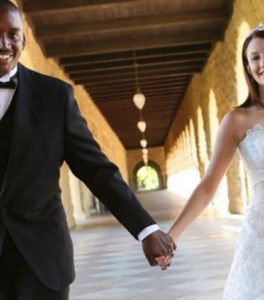Intercultural marriage on the rise
Intercultural marriage is booming in Australia as the nation sees an overall decline in formal nuptial unions.
And a new narrative from the Scanlon Foundation, written by Social researcher Trish Prentice, explores what it is like to grow up in an intermarried family in Australia and how these families are changing the cultural worldview of the next generation of Australians.
 According to the Australian Bureau of Statistics, the number of marriages between two people born in Australia is decreasing. While in 2006 approximately 72 percent of marriages were between Australian born couples, that number decreased to around 54 percent in 2016. On the other hand, marriages in Australia between couples born in different countries increased from 18 percent in 2006 to 31.6 percent in 2016.
According to the Australian Bureau of Statistics, the number of marriages between two people born in Australia is decreasing. While in 2006 approximately 72 percent of marriages were between Australian born couples, that number decreased to around 54 percent in 2016. On the other hand, marriages in Australia between couples born in different countries increased from 18 percent in 2006 to 31.6 percent in 2016.
In her narrative, Ms Prentice asks why intermarriages are growing in Australia and in many parts of the world.
“Some commentators point to the influence of globalisation. As people move more easily and frequently and migration increases, people from different cultural, ethnic and religious backgrounds are being brought into closer contact with each other,” she says.
“Communication technologies and social media are no doubt playing a role, bridging physical barriers and traditional social networks and bringing together people in new ways in virtual space.
“Studies of intermarried relationships in the United States also suggest a ‘Tinder effect’, with intermarriages rising sharply after new online dating apps were released. One of the biggest increases in mixed marriages occurred there in 2014, shortly after Tinder was launched,” Ms Prentice says.
In Australia, intermarriage between Australians and those born overseas tends to occur more frequently in migrant communities that have been here longer, although patterns can vary.
Intermarriage is also influenced by the size of the migrant group. For smaller migrant communities, especially if there is a gender imbalance, a shortage of marry-able partners can lead to men or women marrying outside their ethnic, cultural or racial group.
Ms Prentice says that for many intercultural families, getting married and creating a home life involves the negotiation of different cultural traditions.
“What the family will eat, the special occasions they will celebrate, the religious upbringing of children and the values the family will adopt all involve an extra layer of navigation because they require ‘adopting, or at least adapting to, elements of a different culture’,” she says.
“This process can sometimes be fraught. Our cultural background provides us with ‘a set of expectations about how things work in the world’ that we accept as truth.
“Negotiating different elements of this worldview can cut to the core of how we see the world. To do this successfully requires understanding and acceptance, and often compromise,” Ms Prentice says.
The narrative says that while intermarriages are more common today, this was not always the case. For decades or longer, intermarriages were unacceptable in many parts of the world, including in Australia.
It is only recently that individuals are accepted as having the right to choose a marriage partner without racial barriers or social taboos.
“Looking back on Australian history, periods when there was an influx of new migrants often led to a push back against intermarriage from the local population,” Ms Prentice says.
“During the 19th century the gold rush brought many Chinese miners to the eastern states of Australia, hoping to find their fortunes with the promise of gold. Many of these migrants stayed on and created a new life in Australia and they intermarried with women of European background.
“In the 1850s, approximately 2,000 marriages between ‘white’ women and Chinese men were recorded,” she said.
Another question examined in the narrative is: how do children from intermarried families come to a religious or cultural identity?
It says that studies suggest these children are less likely to identify as belonging to a single ethnic group.
“Some will tend to see themselves as part of the minority culture, others will struggle to identify with any cultural group, or alternately, they will pick and choose ‘the best of both cultures’,” Ms Prentice says.
She says others will embrace a ‘double identity’ and seek out relationships with other people from mixed cultural backgrounds.
“Many factors play a role in the process of identity building for these children, including their social experiences, physical appearance and family upbringing. What is clear is they face different concerns and issues… because of how others see and respond to them,” Ms Prentice says
Read the full narrative here: https://scanloninstitute.org.au/publication/intercultural-marriage-and-changing-face-australian-families












